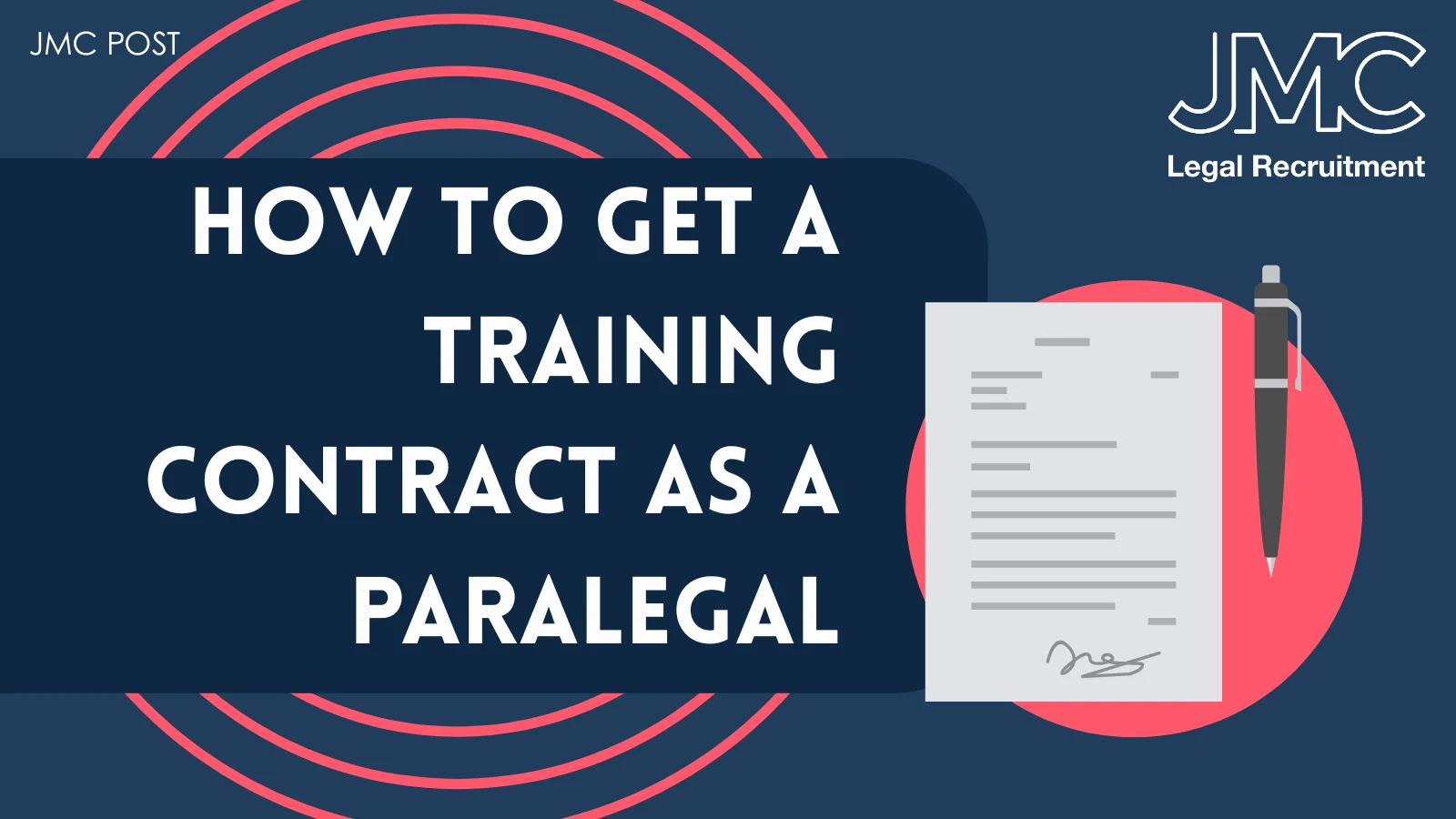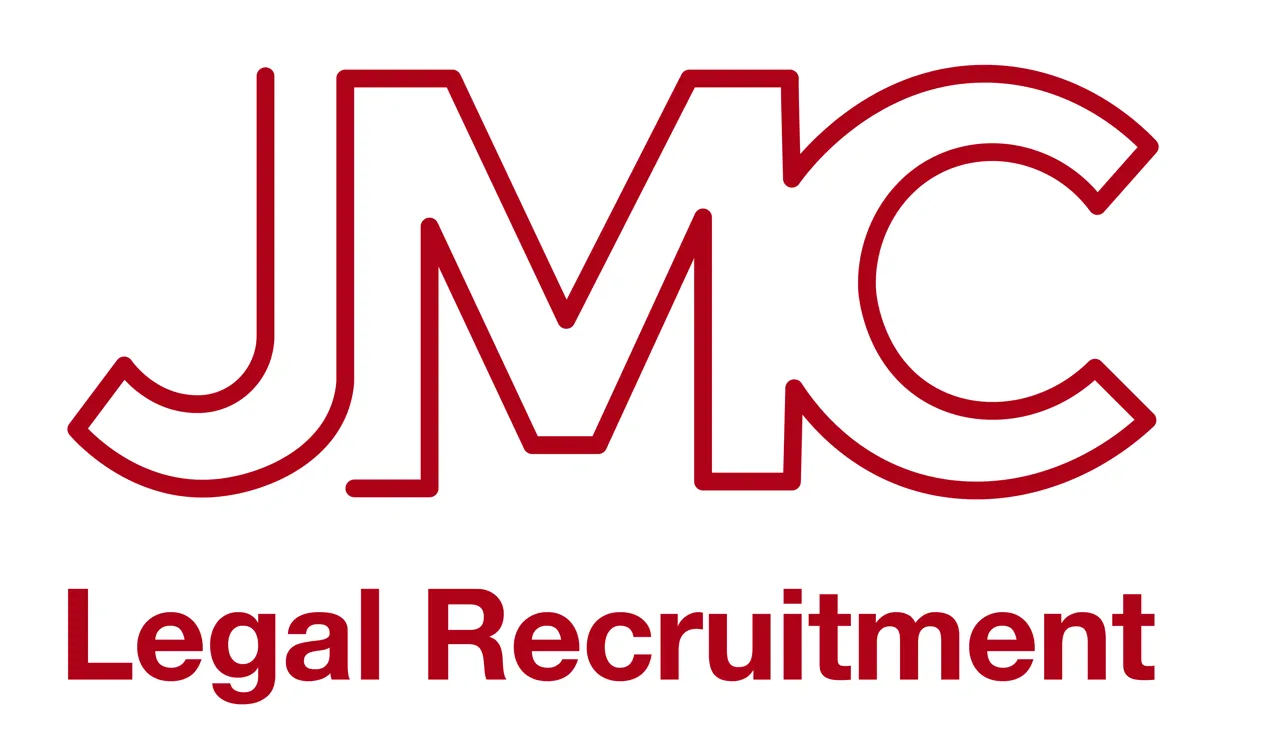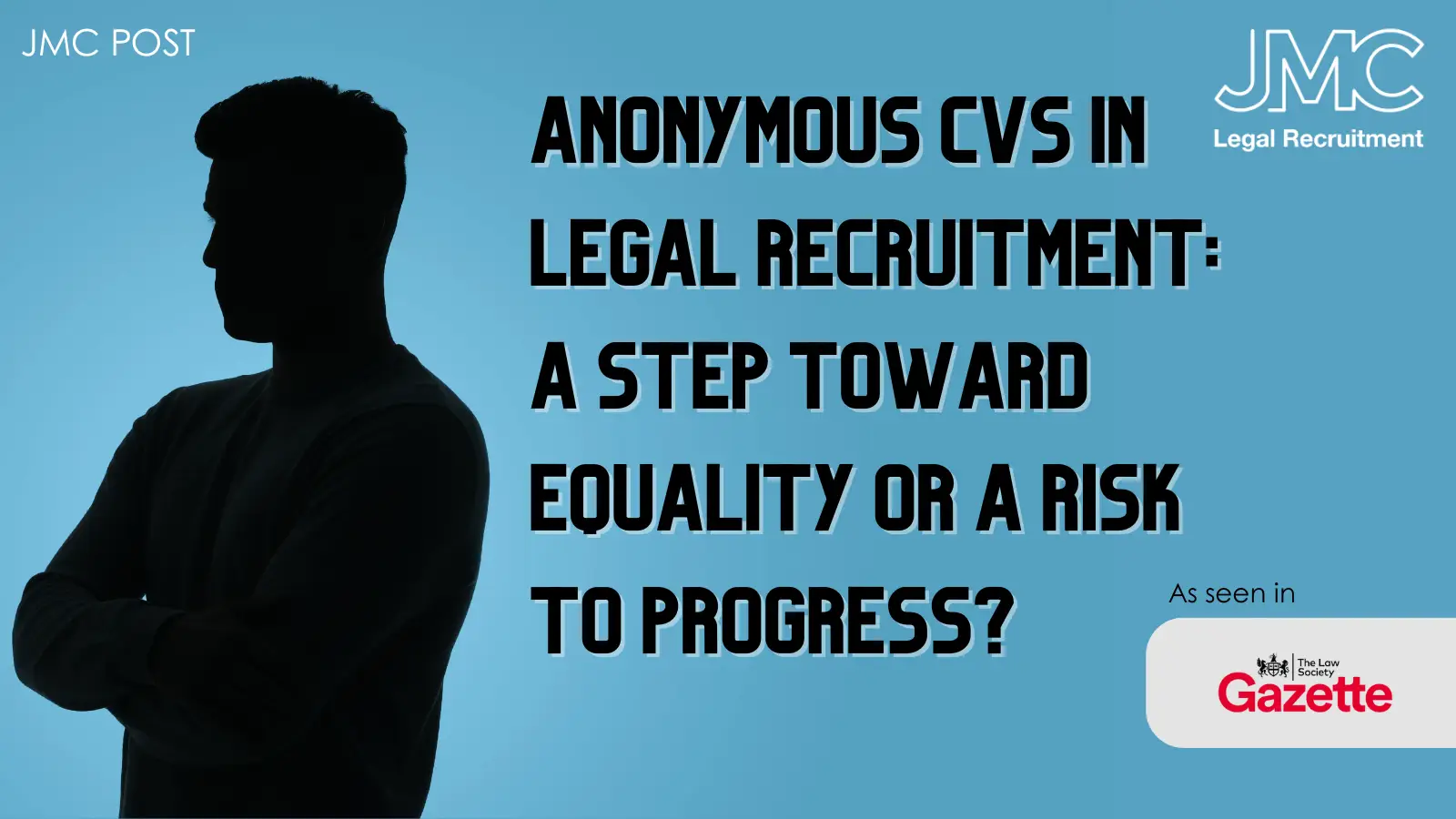
How to Get a Training Contract as a Paralegal
23 Oct, 20258 minutes
How to Get a Training Contract as a Paralegal
A guide for Paralegals looking to secure a Training Contract and make QWE work for them
If you’re a paralegal (or planning to become one) and your goal is a training contract (TC), you already know the odds are tight. Many firms only offer a handful of places each year and most larger firms recruit two years in advance, which means you’re competing long before day one in the job.
This guide shows you how to move from “good paralegal” to “future trainee we can’t lose.” It blends what firms actually look for with the realities of the QWE and SQE world, so you can build a portfolio that makes an internal training contract the sensible choice for your employer.
What is a Training Contract? (And what is a Legal Training Contract?)
In a general employment sense, a training contract is simply a fixed-term employment agreement that provides on-the-job training in a specific profession.
In the context of law, a legal training contract (or Period of Recognised Training under the Solicitors Regulation Authority (SRA) framework) is the final, two-year period of supervised work experience required for a solicitor to qualify under the traditional Legal Practice Course (LPC) route in the UK. This contract involves rotating through different practice areas ("seats") to gain practical experience across contentious and non-contentious legal work. While the new Solicitors Qualifying Examination (SQE) route allows for Qualifying Work Experience (QWE) to be completed in a more flexible way (which can include paralegal work), many employers still use the "training contract" structure to deliver the mandatory two years of experience.
When Do Law Training Contracts Open?
Understanding the recruitment cycle is crucial for paralegals, especially those targeting top-tier firms.
Training contract deadlines vary widely based on the firm's size and type, but the key rule is: start early.
- Overarching Timeline: Most large, international, and City law firms, particularly those in the Magic Circle or Silver Circle, recruit up to two years in advance of the start date. For a September 2028 start, for example, you might be applying as early as 2026.
- Typical Deadlines: Deadlines for these larger firms often fall between June and July for final-year law students and graduates, though some can close as early as December or January in the preceding year.
- Regional Variation: Smaller, regional, or specialist firms often recruit closer to the actual start date, sometimes on an ad-hoc or rolling basis.
Pro-Tip: Since many firms use a rolling recruitment process, it is best to submit your application as soon as the window opens, not wait for the final deadline.
Building Your Law Firm Target List
Big Firms & Big Expectations
When aiming for a top-tier role, like a Slaughter and May training contract, you should tailor your strategy to meet the exceptional demands of Magic Circle firms.
While most firms look for the foundational skills outlined in this guide, Magic Circle firms (the five most prestigious and highest-revenue firms in the UK) demand a higher level of demonstrable intellectual rigour, commercial insight, and a faultless academic record.
Preparing for a Magic Circle contract might differ in these ways:
- Multi-Specialist Approach: Some firms are known for their multi-specialist training, meaning they value lawyers with a broader, less restrictive understanding of corporate law, allowing you to sample a wider range of high-level work streams during your training. Your paralegal experience should show a strong ability to adapt and connect different areas of law.
- Focus on Detail and Precision: Given the complexity and value of the deals they work on, the emphasis on flawless attention to detail and precise drafting is paramount. Your "before and after" folder of drafting improvement (as noted in section 4) becomes even more critical.
- Unique Assessment: The recruitment process can feature unique stages, such as highly challenging written exercises or partner interviews that test your ability to debate and defend complex commercial arguments under pressure.
To understand the full scope of the firms at this elite level, including their size and revenue, you can find out more about the biggest law firms in the UK in our dedicated article.
In-House Legal Training Contracts
If the traditional private practice firm structure doesn't appeal, an in-house training contract offers a valuable alternative.
In-house legal teams are those based within a non-law organisation (like a bank, a FTSE 100 company, or a technology firm) and they deal solely with that company's legal matters.
- Focus: The training is often more focused on commercial contracts, compliance, risk management, and the specific business of the company, rather than the broad, specialist 'seat rotations' of a law firm.
- Advantage for Paralegals: For a paralegal already working within a company's in-house team, an internal training contract application can be a very strong route, as you've already demonstrated your commercial fit and understanding of the business's specific needs.
Start Preparing for Your Training Contract Early
You can’t cram for a training contract. Your best chance comes from designing your first two years carefully so you’re always training contract ready from skills to relationships.
Why so early? Because most big employers’ line up trainees far ahead (often two years), and a large chunk of firms convert from vacation schemes rather than open applications. If you missed vac schemes, your paralegal job can still be a launchpad, but you’ll need a well thought out plan.
Identify the law firm’s training contract route
Do they recruit only through vac schemes? Do they consider internal paralegals each cycle? Get dates, eligibility, and who decides. (Many firms publish this; e.g., Cooley, DLA Piper, Charles Russell Speechlys all confirm recruiting two years in advance and, in some cases, via schemes.)
Collect competencies by mapping the firm’s trainee competencies to the SRA statement of solicitor competence and log examples as you go. (This also helps with QWE sign-off later.)
Understand the market math (and use it to your advantage)
Context helps you stay realistic and strategic. Recent sector data shows the profession is in transition: the SQE route is growing, while many still qualify via the old LPC + two-year training contract. The SRA notes the SQE pipeline is increasing and that the traditional route remains significant.
What this means for you?
Scarcity raises the bar for evidence and fit. Firms prefer low risk hires who already perform at trainee level inside their system. Anything that reduces uncertainty about you, this could be numbers, testimonials, tangible outcomes, all of them can be utilised to move you up the list.
Make your paralegal role count as qualifying work experiences (and as proof)
Under the SQE, you need two years’ Qualifying Work Experience (QWE), which can be gained before, during, or after SQE exams. Crucially, paralegal work can count if it exposes you to relevant competencies and is signed off by a solicitor/COLP with knowledge of your work.
Practical moves:
1. Begin creating a qualifying work experience log: For each matter, capture your role, competencies demonstrated, and supervisor confirmation. Aim for both breadth and depth, seeking varied seats/tasks (e.g., research, client comms, drafting, disclosure, negotiation prep). Deep dive into one to two matters where you can show real responsibility.
2. Don’t wait two years to review your progress: Agree on interim sign-off milestones every three to six months so there are no surprises when application time comes around. Regular reviews turn your paralegal months into double value: you’ll be steadily progressing toward qualification while building a training contract application filled with verified, competence-aligned achievements.
Mirror what firms look for in trainee solicitors
Firms say they want “team players with commercial awareness,” but successful candidates translate that into observable behaviour.
Build a portfolio that mirrors what the firm rewards in trainees:
- Reliability under time pressure: Hit deadlines, prevent slippage, and flag risks early.
- Precise drafting: Keep a private “before and after” folder showing how your drafting improved through feedback.
- Client sense: Demonstrate you can communicate clearly, adopt the firm’s tone, and anticipate requests.
- Initiative (with good judgment): Propose a fix for a process bottleneck; create a checklist/template; suggest a smarter bundle structure, then measure the time saved.
- Commercial awareness in practice: Tie your work to the client’s objectives (cost, timeline, risk); don’t just say “I’m commercially aware”, show how your action protected value.
Pro Tip: build a one-page “deal/case sheet” (anonymised) with bullet points: matter type, your tasks, skills, outcomes (time saved, accuracy, successful filing, client note praised, etc.). This is gold for interviews and internal conversations.
Master the internal game: visibility, value, and advocacy
Great work isn’t always visible. Be intentional.
1. Get on the right matters: Ask your supervisor which files give the best learning and training contract exposure. Volunteer for peaks (disclosure sprints, closing weeks) where teams remember who showed up.
2. Bank testimonials: When a partner/associate praises your work, ask if you can include a line in your internal application or request a short email you can append.
3. Present like a trainee: Write crisp emails, manage up (summaries, bullet options, clear asks), and keep a running issues list so your supervisor trusts your independence.
If your law firm recruits “via vac scheme only,” adapt
Many firms treat vacation schemes as the main pipeline and pre-screen for their training contracts. If your firm is one of them, your strategy is to win a vac scheme place first and then treat those two weeks like a long TC interview: structured feedback, proactive help, and relationship-building across teams.
To secure the vac scheme as a paralegal:
1. Leverage insiders: Ask your line manager/mentor how paralegals are assessed for vacs; request a mock review and align your evidence.
2. Time your application: Know deadlines (they vary; many sit months or years before your preferred intake). Chambers Student and firm pages list them and note when firms recruit only through schemes.
3. Tell a consistent story: “Already operating at trainee level in [X team], proven drafting on [Y matter], seeking formal training structure to scale impact.”
Nail the application mechanics (they really matter)
1. Start by building a tight list of firms where your current experience matches their work (seats, sector focus, client profile). Chambers Student’s resources help you check seat structures and firm expectations; use them to avoid scattergun applying.
2. Highlight your fit and motivation. Reference two or three of: seat mix, training approach, early responsibility, client/sector focus, international collaboration, or pro bono.
3. Give evidence, not adjectives. Swap “I’m proactive” for “Created a disclosure tracker adopted across the team; reduced partner review time by 20% over three matters.”
4. Remember: most big firms recruit two years ahead (and some exclusively via schemes); smaller/regional firms can recruit closer to start. Track the exact dates as deadlines can (and do) shift.
Interview like a trainee solicitor already on the team
Expect competency and scenario questions. Prepare matter-based stories that cover: Challenge → action → result (and what you learned)
Add a mini case study: outline a recent matter (anonymised), your role, the risk you identified, and how you escalated or solved it.
Stuck on how to structure your answer? Our guide on competency-based questions can be found here.
Use the SQE/QWE flexibility to strengthen your hand
A big shift with SQE is that you don’t strictly need a training contract to qualify; firms can structure QWE in ways that fit their business, and paralegal roles can be part or all of that. Many employers still keep the TC model, but some blend QWE blocks across teams. Understanding this makes you easier to place.
Position yourself as “plug-and-play”. Already logging QWE, mapping to competencies. Clear plan for SQE1/2 (timing, prep). Willing to rotate across two to four areas to broaden competence.
If a training contract isn’t available here, create optionality
Even strong candidates can hit timing bottlenecks. Keep momentum!
1. Laterals: Some firms hire future trainees from external paralegals when their own pipeline runs short.
2. Apprenticeship/QWE variants: A few employers now formalise multi-seat QWE without the TC badge; you can still qualify and then later transfer to your ideal firm as NQ.
3. Stay visible in the market: This point cannot be stressed enough, too many paralegals and junior lawyers have no online presence at all. Smart LinkedIn posts about learnings (no client details), pro bono work, legal tech skills will build you a recognisable profile that employers will consider alongside your application.
Common pitfalls (and fixes)
1. Only doing “busywork”: Ask for a slice of substantive drafting/research on each matter; show you can add value, not just capacity.
2. No numbers: Quantify where you can: “reduced bundling time by X hours,” “draft accepted with Y edits.”
3. Waiting for permission: Suggest improvements. Even simple templates or checklists demonstrate ownership.
4. Missing the cycle: Track application windows; some firms change deadlines year to year.
A quick word on scale and competition
Universities rarely underline how fierce the competition is for training contracts.
The traditional LPC + TC route still accounts for a substantial share of admissions; the SQE route is rising each year. Traineeships registered with the SRA were ~4,952 in a recent cycle- small compared to the number of applicants. Many firms convert from vac schemes, reducing external TC slots.
Knowing this isn’t to discourage you, it’s to help you play the game deliberately.
Your 90-day action plan (pin this)
Weeks 1-2
Confirm your firm’s TC/QWE routes and timelines; book a meeting with your supervisor about your development plan. Start a QWE log aligned to competencies, schedule quarterly reviews.
Weeks 3-6
Build an anonymised deal/case sheet with outcomes and numbers. Identify one process improvement you can deliver in your team within 30 days.
Weeks 7-12
Seek exposure to a new task type (e.g., first draft of a client letter, preparing a skeleton bundle, drafting a simple agreement). Ask for written feedback you can cite; line up a partner/associate as your sponsor. Map application deadlines; if your firm recruits via vac schemes only, prep that route now.
FAQ: Training Contracts and Paralegal Routes
Q. Can paralegal experience count towards qualifying as a solicitor?
Yes, under the SQE route, up to two years of Qualifying Work Experience (QWE) can count toward qualification, provided it’s signed off by a solicitor or compliance officer. This means your current paralegal work may already be building your qualification record.
Q. Is it easier to get a training contract internally as a paralegal?
In many firms, yes. Employers increasingly prefer promoting proven paralegals who already know the firm’s systems, clients, and culture. However, competition remains high, especially at top-tier or City firms.
Q. How many paralegals secure training contracts each year?
There’s no universal figure, but sector data suggests a growing number of trainees qualify via the SQE/QWE route rather than the traditional LPC path. Firms are still adapting, which means opportunities can open up mid-cycle.
Q. What’s the best time to apply for a training contract?
Large commercial firms often recruit two years in advance (for example, 2026 for a 2028 start). Smaller or regional firms may open recruitment closer to the start date.
Q. What if my firm doesn’t offer training contracts?
You can still qualify by completing QWE across multiple employers, including legal clinics, in-house teams, or alternative legal service providers.
Be strategic to optimise your chances of success
Breaking into a training contract from a paralegal position is all about strategy, timing, and visibility. The most successful candidates treat every file, every interaction, and every feedback round as evidence of readiness to qualify.
If your firm’s path to qualification feels unclear, start by documenting what you’re already achieving, aligning it to QWE competencies, and staying alert to internal opportunities. The combination of strong performance, proactive communication, and a clear plan for SQE qualification makes you far harder to overlook when the next training contract round opens.
Related Articles:
[Training Contract Myths: BUSTED]
[Not All Gen Z Lawyers are Climbing the Law Firm Ladder]
[Will AI Replace Paralegals?]




